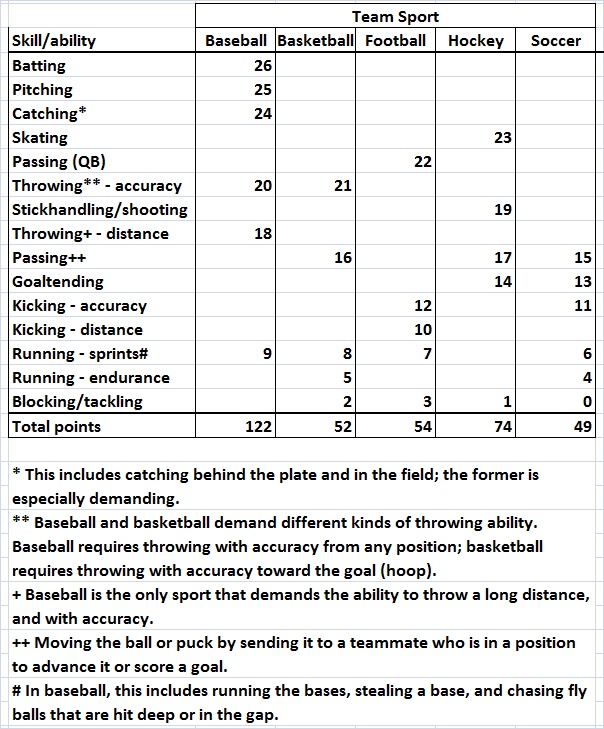There are five major team sports: baseball, basketball, football (American style), ice hockey, and soccer (European football). The skills and abilities required to play these sports at the top professional level are several and varied. But, in my opinion — based on experience and spectating — the skills can be ranked hierarchically and across sports. When the ordinal rankings are added, baseball comes out on top by a wide margin; hockey is in the middle; basketball, football, and soccer are effectively tied for least-demanding of skill and ability.


of the 5 sports you cite, two of them require equipment not used by the others ie hockey sticks, baseball gloves and bats.
as for catching the ball you forgot about the goalkeeper in soccer and the skill known as trapping the ball.
throwing – well you forgot about the goalkeeper throwing the ball
over all this was a poor attempt to show that baseball is king
LikeLike
Mere quibbles. 🙂
Good to hear from you again.
LikeLike
Further comments:
Baseball and hockey employ more specialized equipment because they’re more advanced games than basketball, football, and soccer. Baseball and hockey therefore require more advanced skills. More people can play soccer than can play baseball or hockey. but that’s not a mark of skill, which is the basis on which I’m evaluating the sports. To the contrary, the greater accessibility of soccer is prima facie evidence that it requires less skill than baseball or hockey. Basketball and football (at the pro level) are dominated by freaks of nature. But, inherently, basketball and football — like soccer — are less demanding of motor skills and hand-eye coordination than are baseball and hockey.
Catching and trapping the ball are included in the score for goaltending in soccer. I’ve given soccer goaltenders way too much credit, relative to hockey goaltenders, who work under worse conditions (more screened shots, tremendously fast and injurious puck, faster action around the net, greater frequency of rebound shots).
The goalie occasionally throws a soccer ball, but throwing isn’t an integral part of the game as it is in baseball, where almost every play involves a throw, or in basketball, where throwing (shooting) is essential to scoring.
LikeLike